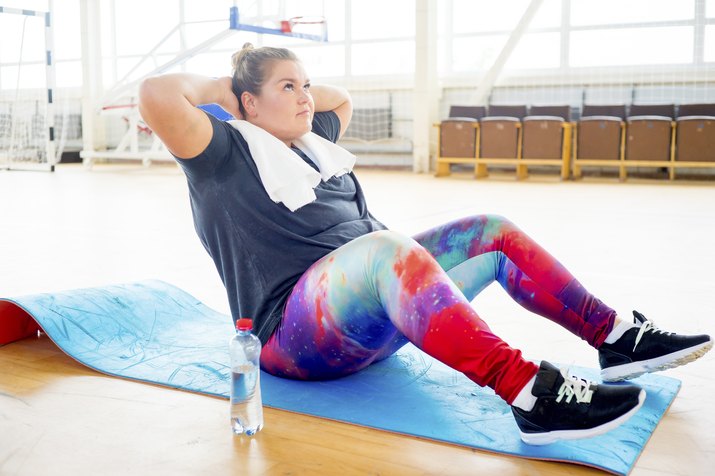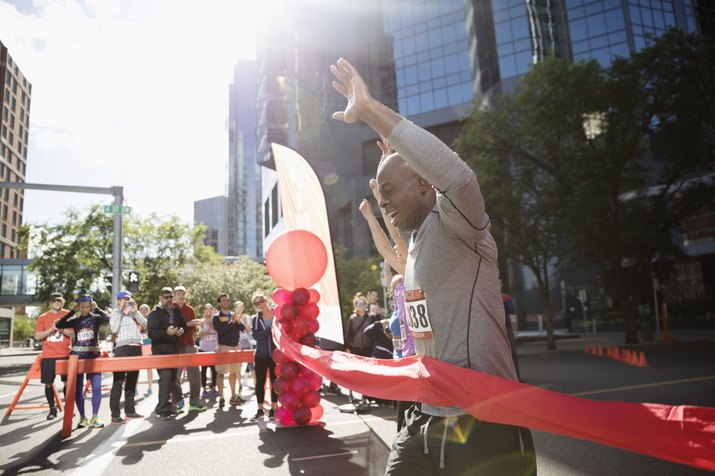
Overview
Romantic relationships and working out share a lot of similarities. In the beginning, you're eager to get to the gym and work hard. You feel good, sleep better and are generally happy. This is the honeymoon period.
Then one day something changes. You lose momentum. You're no longer motivated. Everything hurts. Honestly, you just want it to end. You and your workout clearly need "to have a talk." But it's a fine line between needing to push through and knowing when to throw in the towel. Here are 10 telltale signs to help you determine if it's time to break up with your workout routine and find a new one!

1. You’d Rather Go to the Dentist Than Work Out
You used to look forward to your workout, but lately the very thought of heading to the gym makes you want to pull the covers over your head. What's happening? "If you find yourself dreading your workout it's time to try out some new ways of breaking a sweat," says Jessica Matthews, assistant professor, director and creator of the master of kinesiology in integrative wellness program at Point Loma Nazarene University.
"From busting a move in a dance-based fitness class to heading out on the open water in a kayak, there are endless possibilities for getting in a great workout." Or try out a new gym, says Neal Pire, a New Jersey-based sports conditioning expert. "Do the same workout somewhere else," Pire says. "New machines and surroundings, and maybe different music, will all inspire you."

2. You’re Always Injured or Hurt
When you're injured or sore all the time, it's time to take a step back. "Extreme muscle soreness and tenderness is likely due to overtraining," says Matthews. "Overtraining, by definition, is engaging in constant intense training without allowing adequate time for recovery."
Not only can overtraining negatively impact your physical health through disturbed sleep patterns, loss of appetite and decreased performance, but it can also take a toll on emotional health as well. The latter, often referred to as burnout, includes symptoms such as irritability, depression and insomnia. Matthews suggests scheduling recovery and rest days the same way you schedule workout days.

3. You've Plateaued
In the beginning, you felt as if every workout brought results, but now it feels like months since you've made any progress. What gives? "As we train, our muscles and heart and even brain and nervous system adapt to the stresses we place on them," says Irv Rubenstein, exercise physiologist and founder of S.T.E.P.S., a science-based fitness facility in Nashville, Tenn.
"In a short time, however, the workouts at the level you started with no longer stimulate these systems to adapt." After this neural adaptation phase, you will find it harder to see results. To bump things up again, increase time (duration), frequency (number of times per week), intensity (weight or resistance) or all of the above, though not all at once.
Read more: 3 Tips to Push through a Weight Loss Plateau

4. You’re Always Tired
Regular exercise in the right doses should give you energy, not make you tired. "Constant fatigue is a classic sign of overtraining and means you're not getting enough recuperation," says Pire. "The best thing you can do is schedule a few days of rest, up to a week, with a new training regimen to begin on a designated day."
This revised workout doesn't require all new exercises. Rework your usual plan. Pire recommends varying your modalities (planned exercises), loads (intensity or pounds lifted), repetitions and/or set ranges (volume) and speed or tempo for lifting exercises.

5. You’d Rather Just Do Cardio
Planning and performing a resistance-training workout takes a lot more thought and energy than walking on a treadmill or pedaling a stationary bike. It's easy to ditch weights altogether and do cardio for an hour if you workout isn't engaging enough.
"The key lies in changing your workout formula before you get frustrated to this point," says Pire. "If you've been doing traditional weight training, change to circuit training or intervals, which offer a completely different stimulus." Intervals incorporating cardio can replace your cardio sessions and get you out of the gym faster.

6. You Can't Rally for A.M. Workouts
Early morning workouts aren't for everyone. If you find yourself downing cups of coffee and still feeling drowsy when you hit the gym, you need sleep more than you need a workout, says Pire. Giving up sleep to work out creates a quandary, because both are important aspects of a healthy lifestyle.
A 2013 study from Northwestern University suggests that a good night's sleep can lead to better and longer exercise sessions later in the day. Fewer hours can lead to reduced motivation to exercise. Turn in 20 to 30 minutes earlier than usual on nights before a morning workout, or weave activity into your day instead of sacrificing morning sleep.
Read more: 5 Simple Steps to Get the Best Night of Sleep Ever

7. Your Workout Feels Easy
When your workout feels easier, it means you're making progress. That's the good news! But when you're no longer challenged, it's time to add some variety, says Rubenstein. "Since our bodies adapt to stresses, it's a good idea to change your routine every four to eight weeks, which prevents (lack of challenge) from settling in."
Rubenstein recommends "periodizing" your workouts; creating a structured workout plan commonly used by professional athletes. "It optimizes the adaptation process so your body always has to improve," says Rubenstein. Consider hiring a personal trainer to set up a plan. Or you can break up your own workout. Focus on strength for four weeks and then emphasize endurance the following month.
Read more: 4 Signs You're Ready to Lift Heavier Weights

8. You Only Do Your Best Moves
If you're like most people, your favorite exercise is likely your strongest one. Doing your best exercises gives your ego a boost, but if you never go outside your favorite moves, you can reach a plateau where results stall. A well-rounded workout includes more than just your favorite exercises, says Pire.
"You want to work the muscle groups on a consistent basis, but it's better to have a main, 'mother' lift, and then add other exercises around it that work the same muscles. You're still training the same muscle groups, only differently." For example, if you love squats, add a one-legged squat or step-up. If chest presses are your favorite, add some cable flies or decline presses to vary things up.
Read more: The 7 Most Dreaded Exercises and Why You Should Do Them

9. You’re Gaining Weight (When Your Goal Is NOT to Gain)
You train hard. So why is the scale moving in the wrong direction? You're likely eating more to compensate for the lower blood sugar that results from an intense cardio or strength workout, says Rubenstein.
Or it's possible you're rewarding yourself for a job well done by taking more sitting breaks throughout the day. People who start an exercise or diet program often erode their positive gains by partaking in self-indulgent behavior. The solution: Watch your calories and move all day to keep your metabolism stoked.
Read more: 10 of the Most Common Weight-Loss Mistakes

10. You've Reached Your Goal
If you started exercising to lose weight and accomplished that goal (yay!), it's time to change your objectives, says Pire. "If you lost the weight you set out to lose, now it's time to switch gears and build muscle. Your workout needs to respond to your new goals."
According to the National Strength and Conditioning Association guidelines, if you want to build strength, focus on a weight you can lift for six repetitions or fewer; use a little less weight if you want muscle growth (hypertrophy) and pump out between six and 12 reps. For muscle endurance lighten things up further until you find a weight you can lift more than 12 to 15 times. For more specific programs, seek out a qualified personal trainer or strength coach.
Video of the Day
Video of the Day